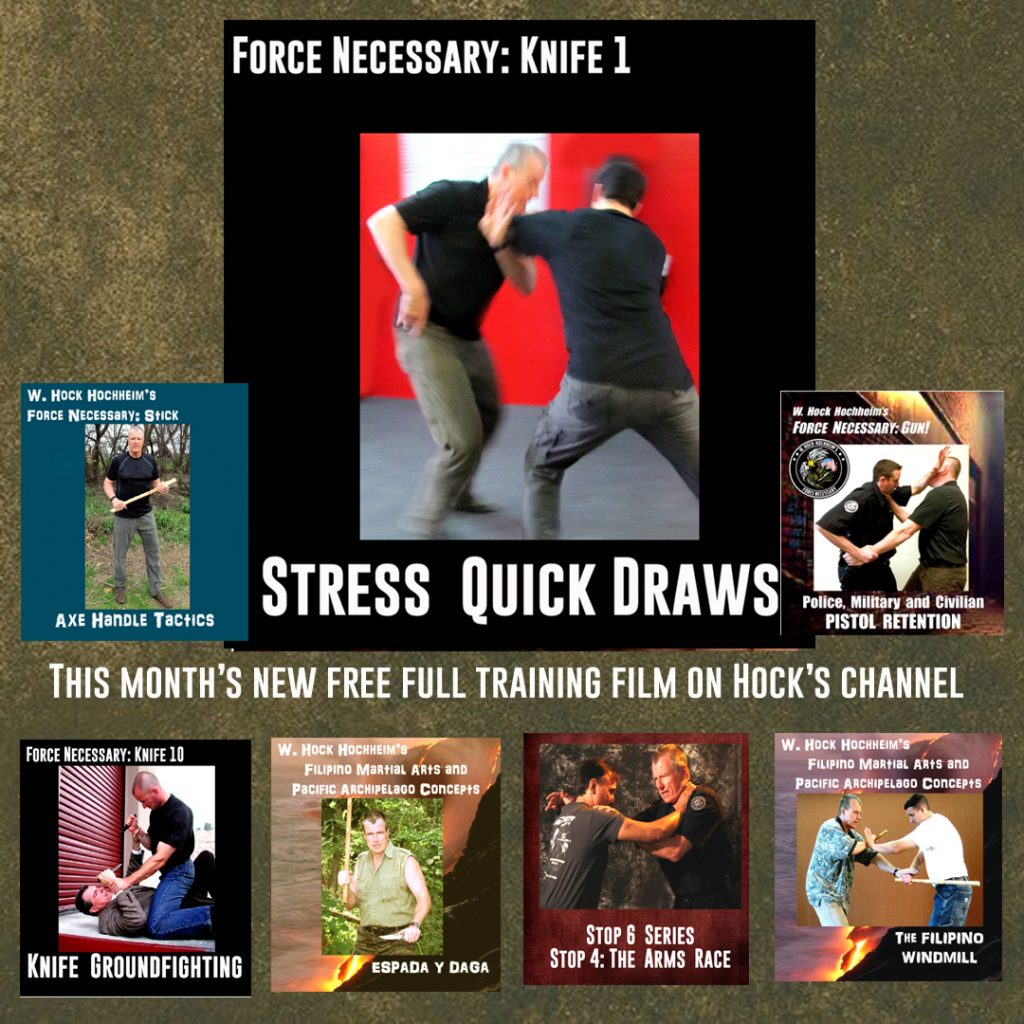An Orderly or Tactical Retreat, (safely walking or running away!) Stay or retreat? A retreat has several definitions, like “retrograde” movements or a more modern “tactical retreat.” Usually, these definitions suggest that one retreats from a superior force in battle. Military. In today’s civilian world, remaining to fight and take action, may become a physical, legal (criminal law and civil law) nightmare and monetary problem. Winning and the law are often at odds.
Whatever the terms, retro, orderly or tactical, it still means you leave, escape, withdraw, whatever, with the best plan to do so. For a smaller, personal situation an orderly retreat is leaving a confrontation, safely and without being chased, at all, or much.
“Just run away!” these pseudo experts will say. But, just how far can you run? How fast? How long?
The law will ask, if there’s trouble, why did you go there and why are you still there? Can you leave people behind? Will you be leaving family, friends and comrades behind? Can you leave? Should you leave? Sometimes you can’t leave. Your choice is highly situational. Think of any violent situation from a fistfight to a crime, to an active shooter, on to war and ask these questions about staying or leaving?
- Who are you and who will you stay or retreat from?
- Who will you leave behind?
- What is happening that causes you to stay or retreat?
- Where is this happening that might cause you to stay or retreat
- Where will you retreat to?
- When is this happening that might cause you to stay or retreat
- When will this be over?
- How will staying or retreating unfold?
- How will this end?
- How far and fast can you run? Can he run?
- Why is it important enough to stay or go?
How exactly will you retreat? If you stay, there will be violence. If you go? Best go in an orderly fashion. When you add the term “orderly,” it speaks of significant specifics. What is this “orderly” version? An orderly retreat?

In his beginning battles he had some large causalities usually from chaotic retreats. When his troops hit their perceived “breaking point,” hey turned and they scattered, most were killed from behind, running in disorderly retreats. Long known, psychological factors reveal that it is easier to “kill from a distance” and to “kill from behind,” without seeing a person’s face, without seeing a “personality.” (This relates to crime also.) Then, Alexander adopted he Macedonian 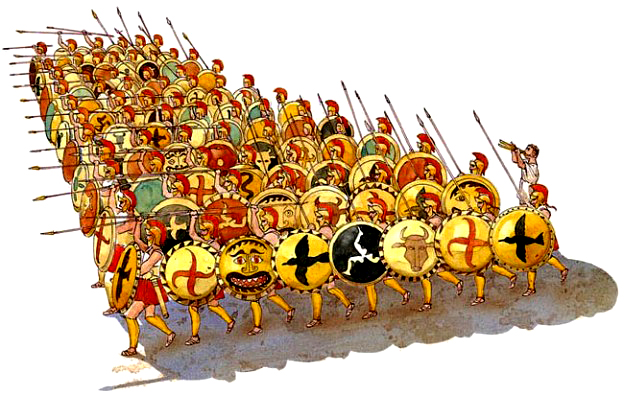
Simply turning and running away, sounds like good advice, but how far and fast can you run, and such may make you easier to be killed, and may ignite an anger, and/or ignite a hunter-chase mentality in a criminal or a enemy soldier. Departing, withdrawing as smartly as possible is better choice.
Turning and leaving. In the martial word, just turning from a too close opponent standing or down on the floor-ground, is “giving up your back” and means something specific to martialists – exposing your back is an invitation to be choked. In crime and war your turned back make you easier to be beaten, captured or be killed. When you turn to leave, it should be done by first backing away in some manner to a safe distance and then turning to leaving.
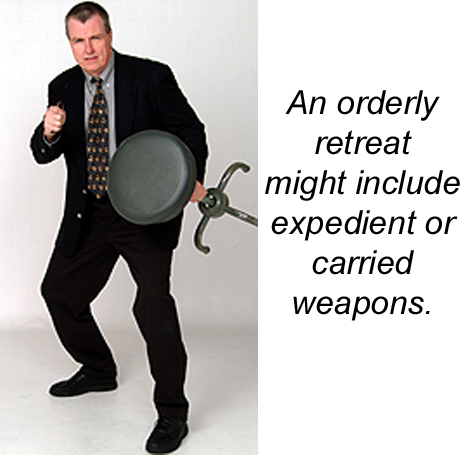
- 1: Back away, still facing the opposition with de-escalation words? That may work sometimes.
- 2: Back away, still facing the opposition saying nothing? That may work sometimes.
- 3: Back away, still facing the opposition with threatening words? That may work sometimes.
- 4: Pre-emptive strike. Then back away, still facing, then turn. That may work.
- 5: You are thrown down. You get up, then pick one of the four choices above. That may work sometimes.
- 6: You beat the holy hell out of the opposition. Then pick one of the choices as to if and when to leave. That may work sometimes.
- 7: Your draw and presentation of a knife or a gun has a good success rate of freezing the opposition. How about any expedient weapon? Then pick one of the choices above to leave. That may work.
- 8: This course is an unarmed course but pick up a nearby expedient weapon. This has a good success rate of freezing the opposition. Then pick one among the choices above to leave. That may work sometimes.
If no physical contact is made yet, we are still in the Stop 1 parameters and leaving the projected fight scene before it starts, is a quintessential Stop 1 situation-problem. But the option to leave may occur in any of the Stops, Stop 2 through Stop 6.

“Hock, sometimes you gotta’ blow the horn,” (the horn being thetrumpet of retreat.) “Always have a go-to hell plan, and another one when that one goes to hell too.”
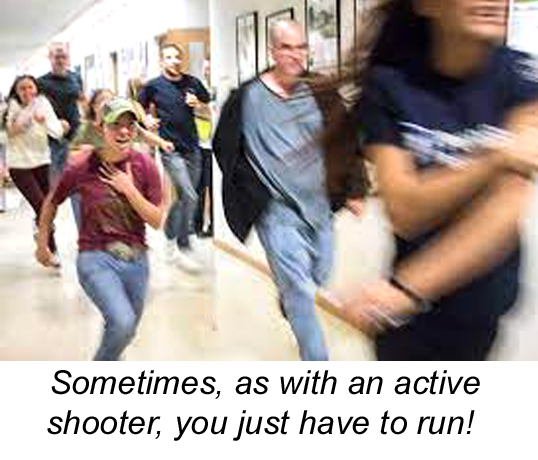
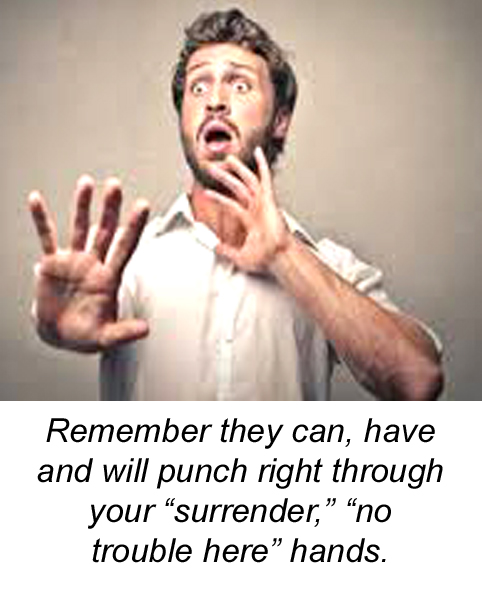
There is no one way to prescribe any one universal orderly retreat, but it is important to understand the concept, teach the idea, and develop and practice some real, “go to hell,” plans.
___________
Watch some free, full training films on Hock’s TV Channel! Click here…
